Sol 14: Interview with: Astronomer – The man who protects us from the Sun
Author: Pierre Fabre
Hi everyone welcome back! In today’s report we are going to talk with Maxime, our astronomer! I’ve been waiting for this episode of “Interview with” for a long time I hope you will enjoy it!
But before starting this cool interview, let’s talk about what happened during this Sol 14 on Mars.
Today was the first day of our last week on Mars. To be perfectly honest today was quite hard. It was the comeback of human factors experiment (and of the terrible « shape test » of the University of Lorraine), but also the comeback of another enemy, the routine. I haven’t talked to you about routine so far but I think it becomes important now. The first reason for this omission is that I try to make the reports I write entertaining so I don’t want to talk to you about the things we do every day. Another reason is that even us, have really noticed the side effect of routine only recently.
At the beginning of the mission, routine was the perfect ally, it allowed us to be efficient in setting all our experiments which took us a long time. Every day was made of new goals: repairing the 3D printer, first mapping with drones, installation of the LOAC experiment, recycle water for the first time, … But now that our experiments are all set, our work is composed of tasks we perform every day mechanically and it is now hard to distinguish one afternoon from another. With all the fatigue accumulated since the beginning of the mission, it is sometimes hard to find the motivation required to work and the need for a nap after a morning of EVA is becoming more present recently. But it also means that we are being more efficient in our work and that we can now afford moments of rest during the day while keeping on doing our job.
Ok now I have to say, at least for the families, that there is nothing to worry about. I think this slump is a quite normal phenomenon after two weeks of mission. We are still motivated to do the job until the end and excited about what we are living on Mars.
I think we still feel as excited as on the very first day before going on an EVA.
This morning for example, we went to the Moon Overlook, it was the first time for Marion and me who stayed at the Hab last time. We were really amazed by the transformation of the landscape in just a couple of minutes of rover. One moment you are on Mars, surrounded by red dunes and suddenly, you teleport and you are on the Moon, everything around you is gray on kilometers. We took some really nice drone shots but they have nothing to do with the drone shots we’ve been taking since our arrival on Mars! This is one way of breaking the routine!
There are still exciting things happening in the station too! Yesterday, Julie tested the 3D printed funnel designed by Maxime and Francois to recycle water more efficiently. This night she recycled 10 times as much water as she usually does thanks to the new funnel. Now we will be able to take showers more frequently and it will definitely make this last week easier for us!
Now it is time to show you what we talked about with Maxime this afternoon! This is the “Interview with: Astronomer”!
“-Hi Maxime, how are you?
-Hi Pierre, well listen after 2 weeks of mission it’s going very well and you?
-I’m fine! Maxime, do you want to introduce yourself for those who don’t know you yet?
-Of course, my name is Maxime Jalabert and I am in my last year of the engineering cycle at the ISAE-SUPAERO engineering school. I have always been passionate about space, I got my first telescope when I was 6 years old and I spent my evenings observing the stars with my father. It was probably those moments that made me want to be an astronaut one day. In high school I was a very involved member of the astronomy club and it was natural for me to continue with higher education. So, after a Bachelor’s degree at Paul Sabatier University in Toulouse I joined the engineering school ISAE-SUPAERO. I had the opportunity to be president of the M.A.R.S club which sends 7 students from the school to the MDRS where we are. As part of an internship, I worked for two months at the Cité de l’Espace as a scientific animator, and last year I was able to design an instrument for measuring the scintillation of stars and satellites from a telescope at the Centre Spatial Universitaire de la Côte d’Azur in Nice. Then, I did an ERASMUS at the University of Stockholm where I followed courses in astrophysics and astronomy. And next semester I’m going to Yale University still in the US to work on space propulsion. As you can see, it was natural for me to apply for this MDRS mission, especially for the role of astronomer.
-Wow, what a background! So, you are the astronomer of this crew, can you explain what is your job during this mission?
-You have to know that Mars does not have a magnetosphere that deflects charged particles from the Sun like the Earth does. My role as an astronomer is therefore to analyse solar activity in order to be able to plan or not plan extravehicular sorties because these charged particles are lethal for us human beings. The shield of the station protects us, but our suits are too thin to provide lasting protection. Strong activity of the Sun results in the presence of visible solar flares on the surface, so my role is to analyse them.
-We didn’t have such issue so far but thanks for protecting us from the Sun! Maxime, you also have an astrophotography project and a research project, can you tell us more?
-Yes, when I’m not on a spacewalk or analysing the Sun I spend my time on these two projects. My research project focuses on the search for supaernovae. The method is simple: for a given galaxy I photograph it several times at different time intervals, I then study the evolution of the luminous flux of the galaxy and if it increases I can then superpose the shots to find the supernova. The method is simple but with about 30 galaxies studied the probability of finding a supernova in 3 weeks is only about 2%. My astrophotography project consists in taking pictures of known objects like the Orion Nebula. After processing, I will use these photos to popularize science, especially in my former high school in my hometown, Limoux. The aim is to transmit my passion for space and maybe even give young students the desire to pursue higher education.
-And what is your favourite project?
-I think I get more pleasure from astrophotography. The infinitely far away has always fascinated me and I still feel a sense of wonder when I see the different pictures taken through the telescopes. Then the idea of transmitting this feeling to people who are more or less sensitive to space through these pictures I find very beautiful somehow.
-Ok I think I understand why. And on another subject, why did you choose to take part in an analog mission?
-The first dream I had as a child was to become an astronaut and to be honest, I still do. So, the MDRS mission was an opportunity to put yourself in the shoes of an astronaut for a certain period of time, while doing some great science. I think, especially the study of human factors in a hostile environment like the Martian environment. In addition to this, we can achieve good communication, always with the aim of raising public awareness of the space world.
-What is your favourite thing about Mars?
-The spacewalks are probably my favourite thing about Mars. The preparation before the spacewalk with the increasing heart rate, the tension when putting on the spacesuits and finally the accomplishment of the opening of the depressurisation airlock with the red Martian desert as far as the eye can see gives me a very strong feeling. Each EVA is a unique experience for me.
-Do you miss Earth sometimes?
-Of course, I miss it, but I think we’ve all prepared for it. On Earth I’m lucky enough to have access to everything in a very short time, whether it’s food we take the car or we walk to the supermarket. If you need information, you get out your phone and look it up on the internet. On Mars that’s not possible, we make do with what we have and it’s quite a challenge when you’ve been lucky enough to live in this societal luxury. I sincerely think that I have taken a step back on my everyday life on Earth and I am happy to have received this sensitivity to our society of overconsumption. Most importantly, I usually talk to my family several times a week and to my friends. Not hearing from them is not easy every day but that’s the part of the game. I really look forward to meeting them at the end of the mission and telling them about this great adventure.”
That’s it for today’s interview, I hope you enjoyed it! The next episode will be “Interview with: Journalist”. I still don’t know how to interview myself but we will come up with something. Stay tuned if you don’t want to miss this next episode of “Interview with”!


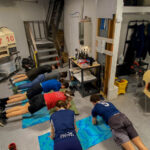
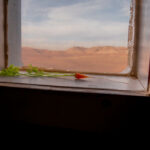
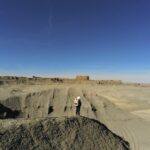
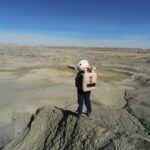
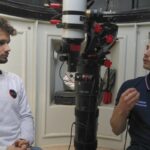
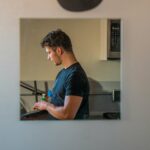
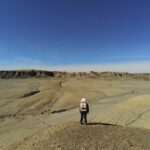
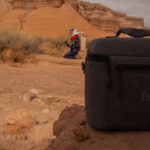
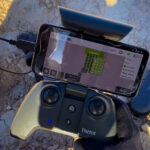
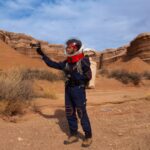
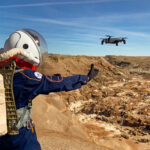
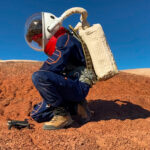
You must be logged in to post a comment.